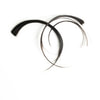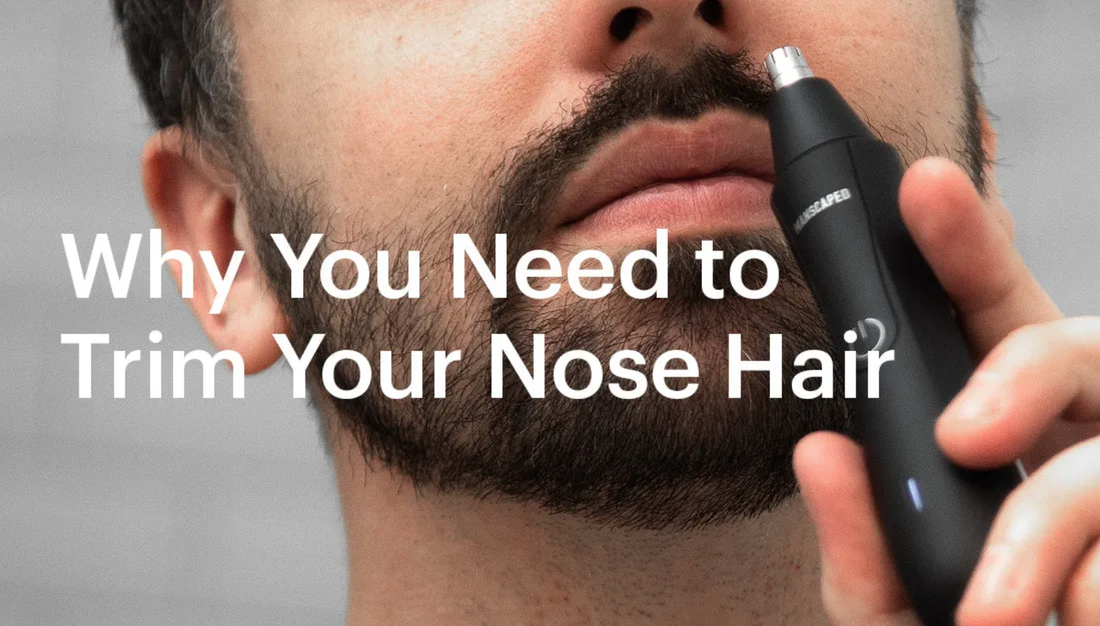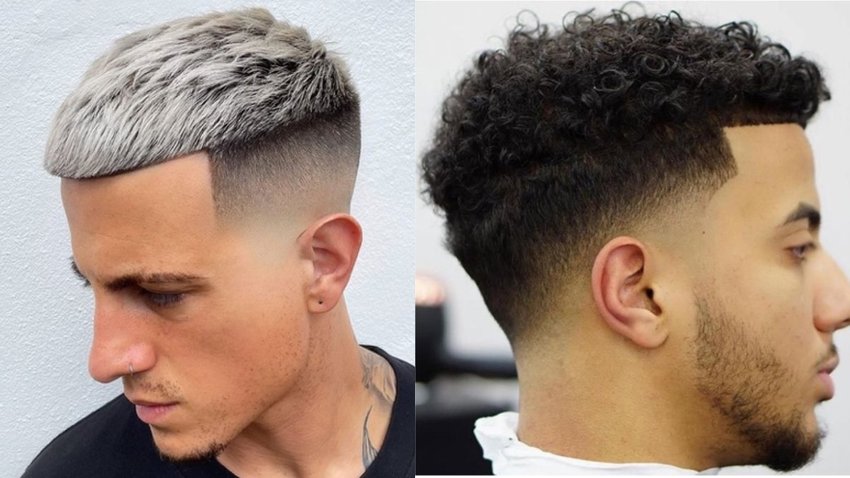|
Those tweezers aren’t doing you any good. Truth is, we all start to go gray at some point in our lives. While gray hairs are completely natural, just the sight of one triggers an internal instinct to immediately pull it out. Now, the commonly held belief is that if you pluck it, many more grays will follow in its wake. This is actually a myth—what you do to a single strand can't spread like contagion. "The surrounding hairs will not turn white until their own follicles' pigment cells die," says Trey Gillen, hairstylist and creative director of education at SACHAJUAN. So, why all the panic about plucking gray hair? Well, there are almost zero benefits to the temporary departure of a gray strand; in fact, there are worse consequences. There is only one hair that is able to grow per follicle. When your strand turns gray or white, the pigment cells in the follicle surrounding the hair have already died. "In other words, plucking a gray hair will only get you a new gray hair in its place," says Gillen, so any plucking is pretty much pointless since you're simply delaying the inevitable. In the long run, you're actually doing more harm than good. "Plucking can traumatize the hair follicle, and you can damage the follicle to the point where it will no longer grow any hair," says Gillen. Forget about having gray hair—you won't have any hair there at all. "If you're a serial plucker, repeated 'plucking trauma' can even cause infection, scar formation, and bald patches," adds Gillen. Ultimately, this will create the appearance of hair loss and thinner hair. If you consider yourself an expert plucker, you might be thinking that you can pluck the hair carefully without causing damage. But tread with caution—the reason people think more grays are summoned when they pluck is because it looks and feels more noticeable on your scalp. When the follicle produces less melanin, it tends to produce less sebum as well, so gray hair has a different texture from the rest of your pigmented strands. In the best case scenario, the gray hair that grows back in its place will be wiry—think coarser, thicker, and more noticeable than the hair you had before, says Gillen. Gillen agrees that the best thing to do if you notice a gray hair is to ignore it—it happens to the best of us eventually—or dye it back to its original color. If there is a gray strand you absolutely must get rid of, very carefully cut it off instead of plucking it. And of course, you can always embrace it—there's a silver lining in going gray. There is wisdom in age, after all, so consider those distinguished strands a crown of wisdom. from RealSimple
0 Comments
If you decide that you want to make your hair less frizzy or straighter, you may choose to go to a professional stylist at a hair salon for a hair straightening or smoothing service. Most hair smoothing or straightening products release formaldehyde gas, a known human carcinogen as classified by the International Agency for Research on Cancer, into the air during the hair straightening or smoothing process. Formaldehyde exposure can cause both short- and long-term effects that may impact your health. What Happens During the Hair Smoothing Process? Your stylist usually applies a hair straightening or smoothing solution to your hair and follows it with a heat processing step—typically performed with a flat iron device that seals the solution into the strands of the hair. When the solution is heated, the formaldehyde in the product is released into the air as a gas. If the salon is not properly ventilated, you, your stylist, and others in the salon are at risk of inhaling the released formaldehyde. Why Exposure to Formaldehyde is Dangerous When formaldehyde is released into the air and is present in the air at levels exceeding 0.1 ppm, it can cause serious irritation of your eyes, nose, and lungs. It can also cause skin sensitivity or allergic dermatitis. Formaldehyde Exposure: Potential Short-and Long-Term Effects The greater the exposure to products that contain formaldehyde in terms of both length of time and concentration, the higher the potential health risks. Individuals who have experienced formaldehyde exposure have described reactions such as eye problems or irritation, nervous system problems (for example, headaches and dizziness), respiratory tract problems (sore or scratchy throat, cough, wheezing), nausea, chest pain, vomiting, and rashes. Chronic effects associated with formaldehyde can include an increased prevalence of headaches, asthma, contact dermatitis (a red, itchy rash caused by direct contact with a substance or an allergic reaction to it as a result of sensitization) and possibly cancer. It’s important to note that some people are very sensitive to formaldehyde, whereas others have no reaction to the same level of exposure. If you are sensitive to formaldehyde, you should not use this type of product. Steps to Take If You’re Thinking of Using Hair Smoothing Products
See a fact sheet and an infographic for more information about hair smoothing products and formaldehyde. from the FDA
3/16/2022 0 Comments How To Trim Your Nose HairGuys: Masks are coming off. You're heading back to the office. Now trim your nose hairs. People want to see noise hair like they want to see roadkill or someone’s opened fly. That makes no one, save for a few demented folks. No one likes seeing things like nose hair because it’s unsightly. If there’s a line that separates the tolerable faux pas from the intolerable ones, nose hair hangs out in the latter’s deep end. And while exposed nose hair isn’t quite as offensive as passing wind or belching among company, it is more offensive than keeping your shoes on in someone’s house sans asking the shoe rule or pointing at people in public like an asshole. Getting old is a part of life, granted, but no one woke up today and factored nose hair into their list of things to dodge. Nose hairs are the butt crack of your face. If your nose hair’s showing, be a good citizen and trim it. Here’s how to do just that. First, A Word On Frequency How often you’ll trim your nose hair depends entirely on your genes. Are you hairy? Were your forefathers hairy? Has 40 come and gone? If it’s a “yes” to all those, then you’re looking at once every two days or so. Otherwise, once a week’s the default setting you’ll want. What To Use This comes down to who wins when the luddite on your right shoulder fights the technophile on the left. For the first of the two methods we’ll look at, let’s assume the technophile wins. The Best Battery-Powered Nose Hair Trimmer Battery-powered trimmers boast blades that, once revved up, eat through nose hair like nothing. Our favourite is Panasonic’s High-Performance Multi-Use trimmer, not just because it works in and out of the shower but because it’s worth every penny. Double edge blades fashioned from Japanese stainless steel sit inside a protective cone that keep said blades from slicing the interior of your nostrils. And it’s even got a built-in vacuum system. Hey, if you’re going hard, go hard. The Best Manual Solution If you’re still reading, chances are you like things done the hard way. Respectable, but let’s hope you’re not an actual luddite. The robots will take over whether we like it or not. Since you rely on the dexterity of your hands, consider Tweezerman’s Facial Hair Scissors, the fittest instrument for the task. Both blades are rounded at the tip in case sudden blasts of thunder make you jump. Both blades are also concave like the inside of your nostrils, so with a steady hand and enough patience, getting in and out of those holes will be a cinch. Remember These Two Crucial Tips
For this story, visit: Crown Shaving Co Did You Know You Have Two Kinds of Nose Hair? There are those that grow, and those that unfurl No? Then you'll want to read this article from Men'sHealth. Check out this article from Manscaped, too. How to Trim Your Nose Hair and
Why You Need to Is your hair dry and brittle, or maybe you struggle to detangle your locks and tame the frizz? Deep conditioners come to the rescue. Implementing these treatments in your regular hair care routine will take it to a whole new level. All you need to do is find the right products to suit your hair type and deep condition your hair regularly. Let’s explore the variety of deep conditioners and find out which will work for you best. Benefits of Deep Conditioning Would you agree that a proper skincare regimen can’t consist of only a moisturizer, right? Equally, shampoo and conditioner are only the bare basics for your hair care routine, deep conditioner being an important product to add to it. Deep conditioning masks are applied for a certain amount of time to deeply penetrate the hair shaft and nourish and moisturize your strands. Deep conditioners have a thicker and more concentrated formula that contains hydrating and nourishing ingredients to prevent breakage, make hair softer, less tangled, and easier to style. If the hair is lightened and faces frequent heat styling, you should never skip a deep conditioner. If you do, fixing brassy hair or going lighter without going through intensive deep conditioning to restore the health of the locks first may completely ruin your hairstyle and bring you even further away from your hair color goals. To build your winning haircare routine, you need to figure out what are your main struggles: whether it’s high porosity, dull look, or split ends – you need to face the problem to tackle it. A deep conditioner can help with all of these challenges, but hair types matter a lot here, too, as fine, frizzy, or coarse hair would require a different approach. How to Deep Condition Your Hair Our team has researched and picked the best ways to deep condition hair, from the top-rated salon procedures to DIY recipes you can do at home. We hope you can choose some that will work best for your locks. #1: Store-Bought Deep Conditioning Masks If you need to deep condition your hair, a hair mask might be the easiest and the most common solution. The difference between a deep conditioner and a regular conditioner is that it has a more reach and concentrated formula. Here are some of our favorite deep conditioning masks:  Davines OI Hair Butter contains high-grade natural ingredients and provides instant smoothness and softness effect. Use it to tame frizz and to protect your hair against UV rays.  Moroccanoil Intense Hydrating Mask is enriched with argan oil and other deeply hydrating ingredients which improves hair’s elasticity and shine. This deep conditioner is designed for medium to thick, coarse hair.  Shea Moisture Jamaican Black Castor Oil Strengthen & Restore Treatment Masque is one of the Curly Girl Method approved deep conditioners (Curly Girl Method is a popular modern way of looking after your curly locks). It contains a high level of protein and works like magic for the curly community.  Pureology Colour Fanatic Deep Treatment Mask is the best bet for fine-colored hair. It has a lightweight formula that wouldn’t cause excessive build-up or weigh your hair down. However, it doesn’t compromise on the quality of its ingredients: this product will immediately restore and protect your strands. Normally, you’ll need to use a deep conditioner once or twice a week. Using deep conditioning more often can cause a buildup in your hair, which consequently will cause more harm than benefit. Here are the steps to apply your deep conditioner:
#2: Olaplex An absolute hair hero of the last few years, Olaplex, has indeed seriously changed the game for many of us. Its patented formula can noticeably repair even severely damaged hair, reduces breakage, and protects hair structure. Most of the reputable hair salons offer professional Olaplex deep conditioning as well as Olaplex additives that can be used during any coloring process. Also, their No3 Hair Perfector is a product designed to be used at home and is one of the best intensive hair treatments to date.  Olaplex works on a molecular level and restores inner hair bonds. It works on any hair type but is an utter must-have for bleach-damaged hair. Also, it reduces damage caused by the sun, hot tools, and chemicals. It’s cruelty-free and it doesn’t contain sulfates or parabens, which means you can confidently use it to deep condition curly hair. Here is how to deep condition with Olaplex at home:
#3: Coconut Oil We totally swear by coconut oil as the best natural ingredient for hair care. It contains fatty acids and Vitamin E – ingredients that moisturize and hydrate hair as well as reduce its damage. Eventually, it facilitates length retention, as it helps you maintain the health of your hair for a longer time and you need a haircut less often.  Coconut oil is great for coarse, curly and frizzy hair. It’s also perfect for deeply conditioning chemically relaxed and bleached hair. However, it might feel too heavy for fine hair or those who have naturally oily scalp. In this case, you can still use it, but make sure you thoroughly rinse and shampoo your hair. It’s definitely not recommended before special occasions where you would have your hair styled professionally or even just curl your hair. Here is how to use the natural oil as a DIY deep conditioner:
#4: DIY Deep Conditioning Mask While there’s a vast variety of ready-to-use deep conditioners from high street to luxury products, making your own product feels like a very special self-care ritual. Here is the recipe:
Enriched with vitamins A and E, shea butter has excellent emollient qualities. Castor oil strengthens the hair follicles and facilitates hair growth. Both these ingredients, alongside the benefits of coconut oil, make your hair shiny and strong, prevent sun and pollution damage. Here are the steps to prepare and apply apple natural oils deep conditioning:
This DIY conditioning treatment is good for any hair type, especially if your hair needs a shield to prevent losing hair’s moisture. However, if you have the oily scalp of very fine hair, it might feel too heavy for you. Of course, there are more homemade hair mask recipes that often include ripe avocados, honey, castor and olive oil. These will be a good addition to your healthy hair journey, but they will unlikely work as a deep conditioner substitute, as many ingredients do not have fatty acids needed to penetrate the hair shaft. We hope you found some useful information in this article. As we all know, the key to success is consistency: use a deep conditioner once a week and you will soon see a noticeable difference in your hair. Not only will it get shiny, less tangled and more manageable, but you will also be able to grow your locks longer. from The Right Hairstyles
More men are embracing their hair's natural texture, and they're looking for styles that help compliment it. Here, styling tips that help emphasize facial angles and multi-dimensional texture on three popular looks.  French Crop For a clean-cut, modern haircut that stands out, combine a longer top with a fade on the sides. This low-maintenance look requires a product like mop Basil Mint Firm Hold Clay to create piecey texture and fringe. To use, emulsify in hands until the product is warm enough and of a softened consistency. Apply to damp or dry hair, creating texture by varying direction of the hair forward, back, and up.  Quiff Often deemed the “lazy man’s pompadour,” the quiff is an incredibly popular, high-volume, medium-length hairstyle. And while most of the quiffs you’ll see are being worn by men with straight hair, wavy hair is just as well-suited for this trendy style. A molding cream, like Mop Orange Peel Molding Cream, is the perfect product to create the volume required for this look. Use on damp hair to create the look and add texture to hair when it’s dry for definition and separation.  Curly Hair Fade The curly hair fade focuses the eyes on the top of the head where natural texture is enhanced by working with instead of against waves and curls. Use a low-hold styling product, like mop Pomegranate Glossing Pomade, to enhance the hair’s natural movement while adding separation, shine and moisture. Use sparingly. Product can be layered for buildable texture throughout the day. |
Hair by BrianMy name is Brian and I help people confidently take on the world. CategoriesAll Advice Announcement Awards Balayage Barbering Beach Waves Beauty News Book Now Brazilian Treatment Clients Cool Facts COVID 19 Health COVID 19 Update Curlies EGift Card Films Follically Challenged Gossip Grooming Hair Care Haircolor Haircut Hair Facts Hair History Hair Loss Hair Styling Hair Tips Hair Tools Health Health And Safety Healthy Hair Highlights Holidays Humor Mens Hair Men's Long Hair Newsletter Ombre Policies Procedures Press Release Previous Blog Privacy Policy Product Knowledge Product Reviews Promotions Read Your Labels Recommendations Reviews Scalp Health Science Services Smoothing Treatments Social Media Summer Hair Tips Textured Hair Thinning Hair Travel Tips Trending Wellness Womens Hair Archives
July 2025
|
|
Hey...
Your Mom Called! Book today! |
Sunday: 11am-5pm
Monday: 11am-6pm Tuesday: 10am - 6pm Wednesday: 10am - 6pm Thursday: Closed Friday: Closed Saturday: Closed |







 RSS Feed
RSS Feed